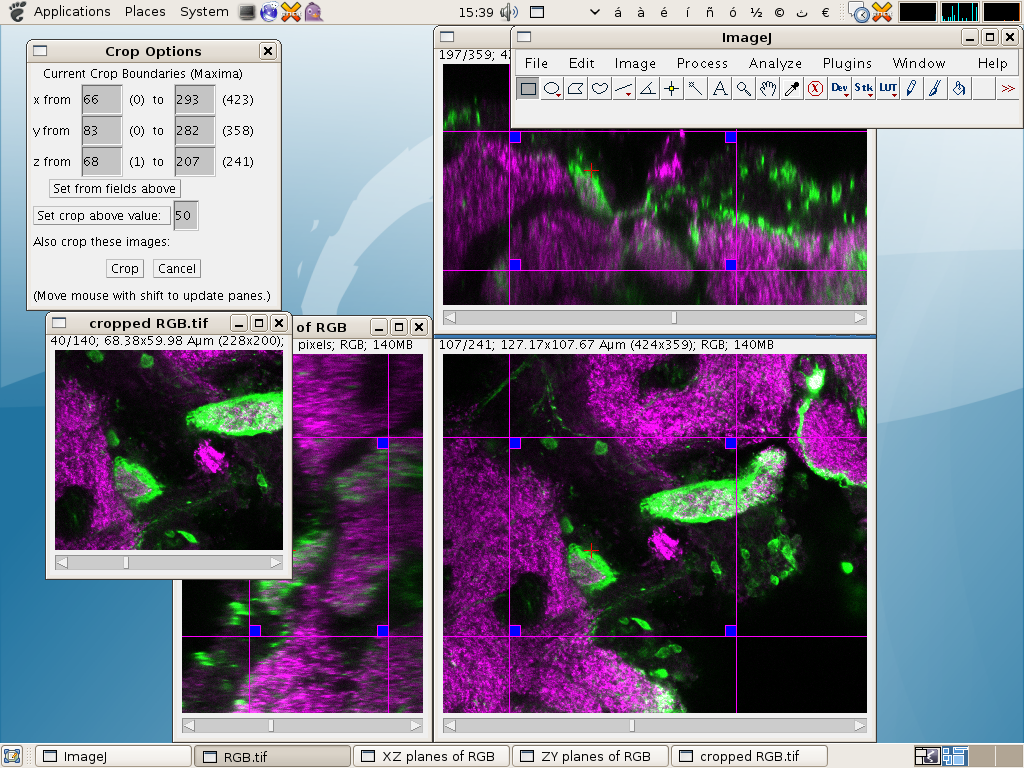

- #Imagej software re how to
- #Imagej software re update
- #Imagej software re registration
- #Imagej software re code
Many impressive variations and extensions have been published, some of them using new variations or entirely new naming schemes: It allows in toto imaging of large specimens by acquiring image stacks from multiple angles with high spatial and temporal resolution. Lightsheet fluorescence microscopy entered the world of modern biology in 2004 when Selective Plane Illumination Microscopy ( SPIM) was published. The top row shows the multiview deconvolution of this seven-view dataset, the lower row the content-based fusion. The entire embryogenesis was acquired using the Zeiss Demonstrator B. The first video shows a developing Drosophila embryo expressing His-YFP in all cells.
#Imagej software re how to
Please check out the Citation section for information on how to cite this software package.
#Imagej software re registration
Both datasets were registered using the bead-based registration ( Nature Methods, 7(6):418-419) and the Multiview Deconvolution ( Nature Methods, 11(6):645-648), which are part of this software package. Two examples of multiview datasets reconstructed with this software package are shown as YouTube videos below. there is only one stack per timepoint, this software can be used to stabilize the timeseries (drift-correction). When we speak of multiview datasets we generally mean that per timepoint there n image stacks, which could be different: It has all the functionality the SPIM Registration offered, but is much more flexible and supports many more types of registration, fusion and data handling. While the SPIM Registration will continue to live within Fiji for the time being, we will mostly offer support only for this new software package. This software package is the successor to the SPIM Registration package. Both projects share a common XML data model to describe multiview datasets. Interactive viewing and annotation of the data is provided by integration with Tobias Pietzsch’s BigDataViewer. The software is designed for lightsheet fluorescence microscopy (LSFM, second box), but is applicable to any form of three or higher dimensional imaging modalities like confocal timeseries or multicolor stacks. The Multiview Reconstruction software package enables users to register, fuse, deconvolve and view multiview microscopy images (first box). Webpageįor technical details about the registration method and SPIM imaging see also SPIM Registration Method. Tomancak (2014) “Efficient Bayesian-based Multiview Deconvolution”, Nature Methods, 11(6):645-648. Tomancak (2010) “Software for bead-based registration of selective plane illumination microscopy data”, Nature Methods, 7(6):418-419. If you use it successfully for your research please be so kind to cite our work: Please note that the SPIM registration plugin available through Fiji, is based on a publication.
#Imagej software re code
To enable GPU hardware accelerated processing, you might want to download the native CUDA code for: The source code is available on GitHub, please also report feature requests & bugs there.
#Imagej software re update
Simply update Fiji and the Multiview-Reconstruction pipeline will be available under ‘ Plugins › Multiview Reconstruction › Multiview Reconstruction Application’. The integration of the Multiview Reconstruction and the BigDataViewer is available through the Fiji Updater.

If you’d like to help, check out the how to help guide! Download The content of this page has not been vetted since shifting away from MediaWiki.


 0 kommentar(er)
0 kommentar(er)
